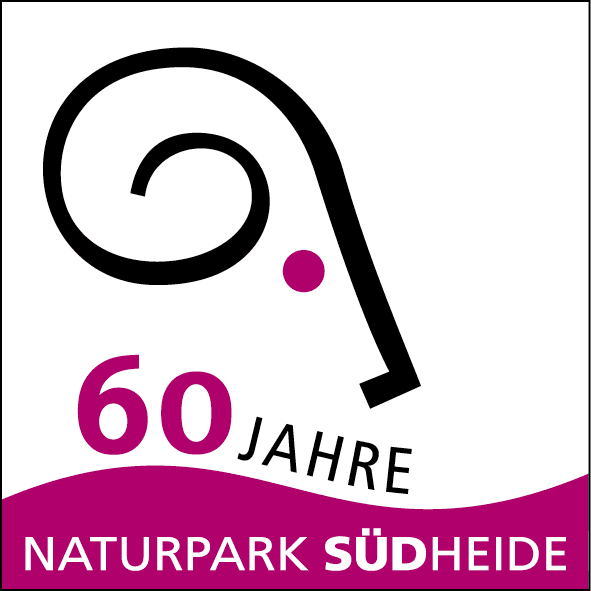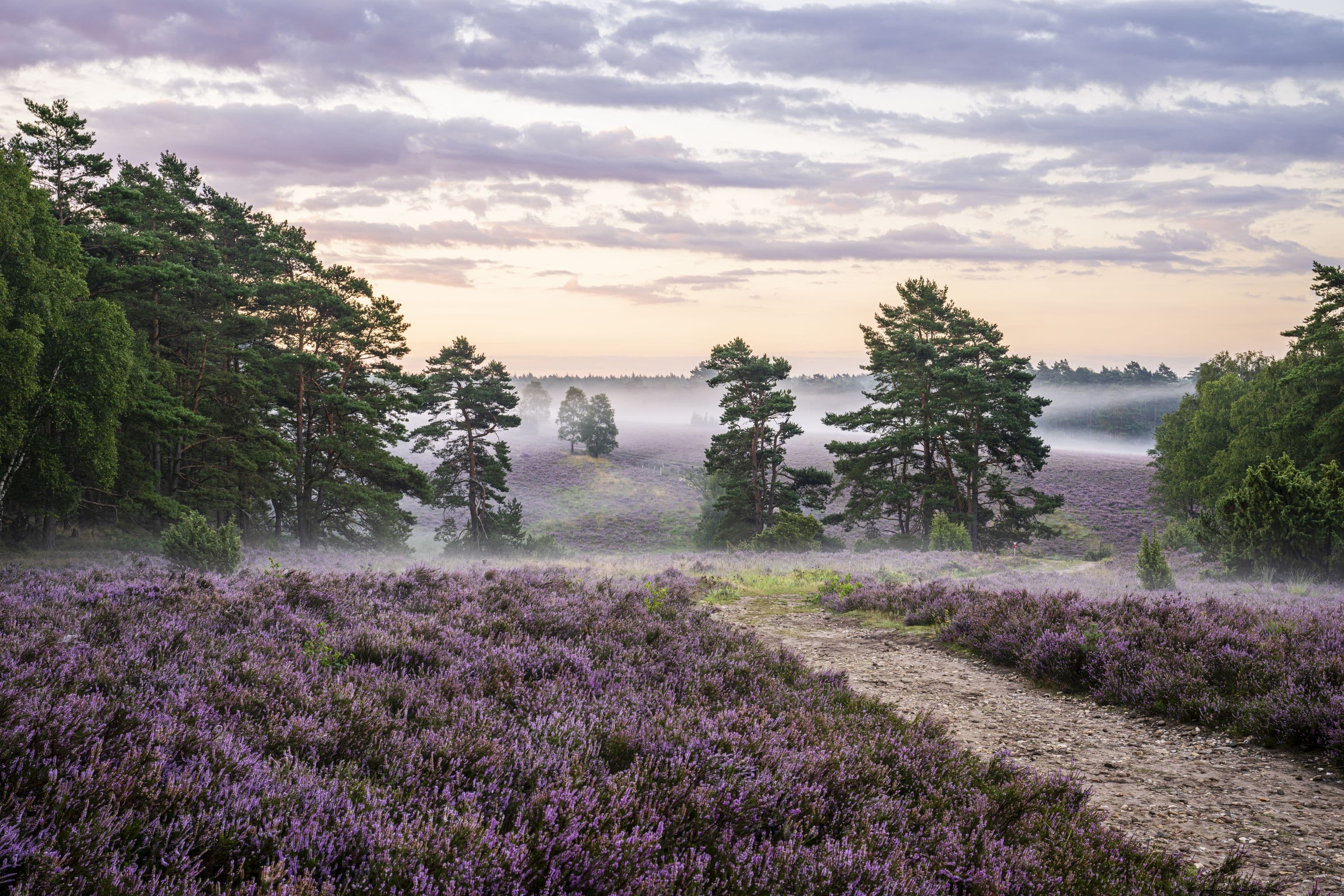
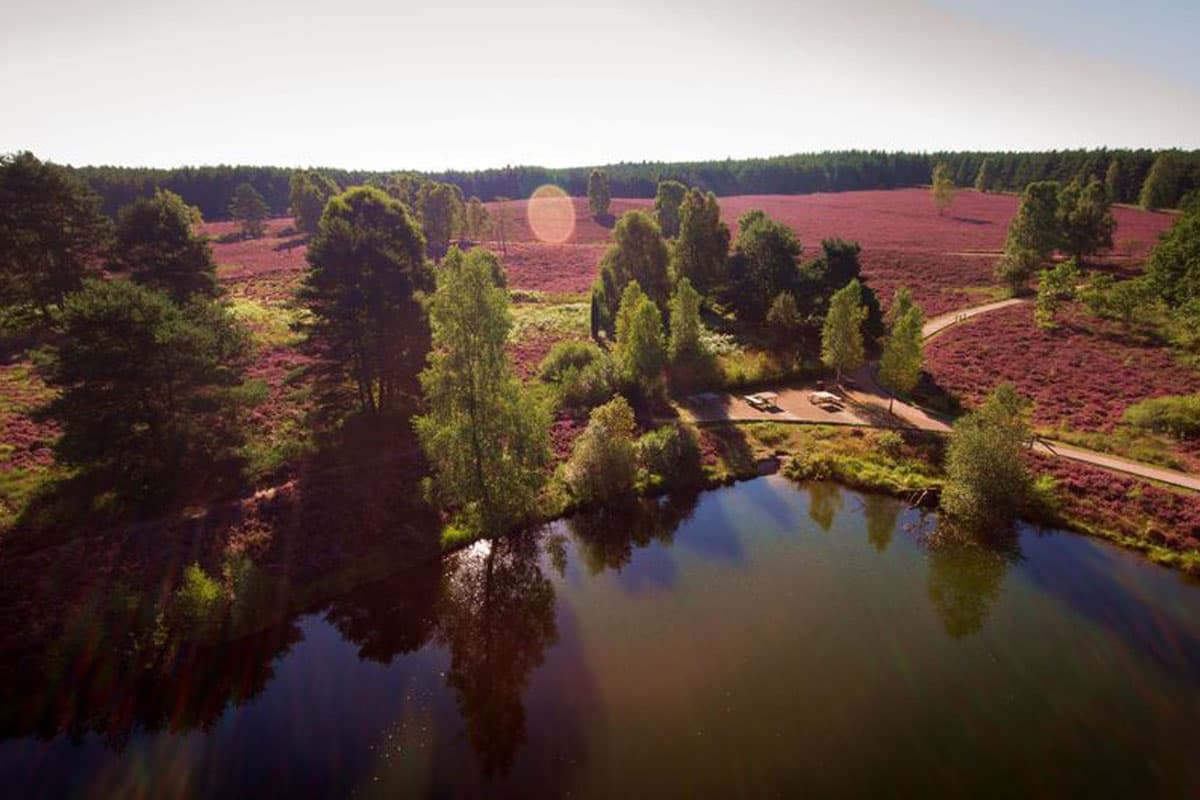
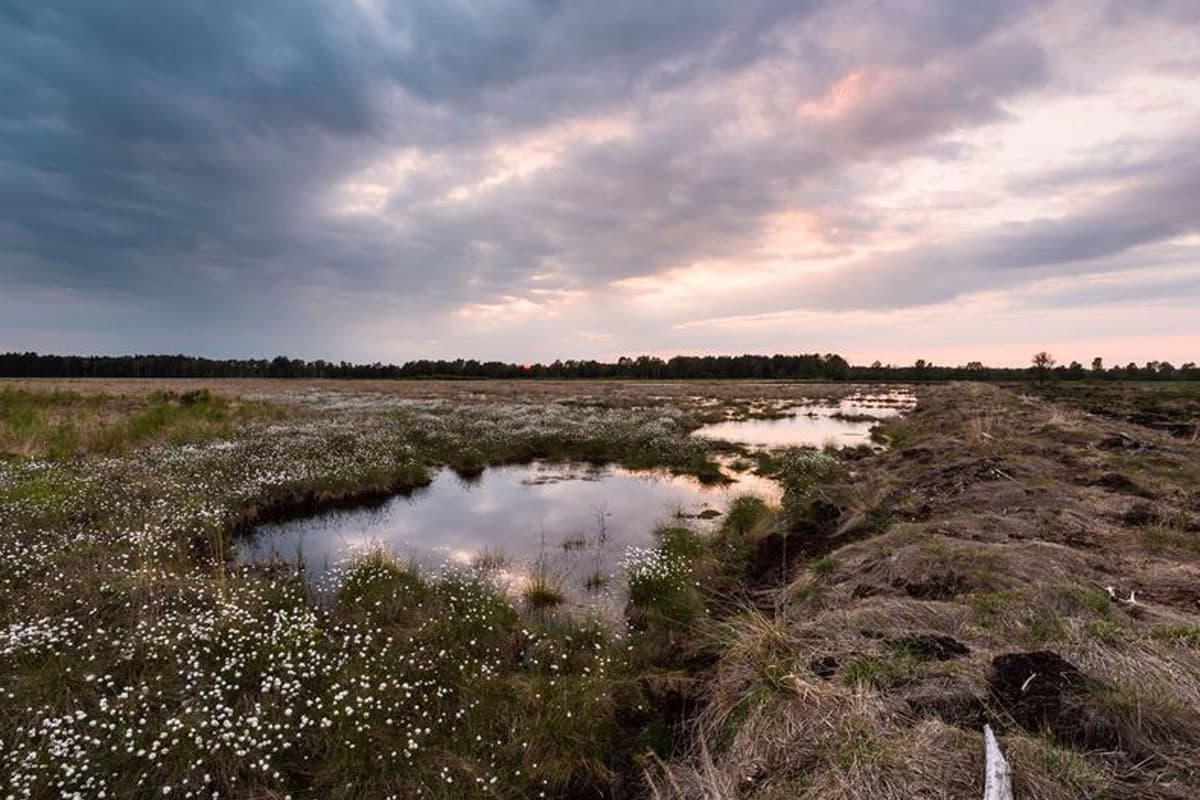
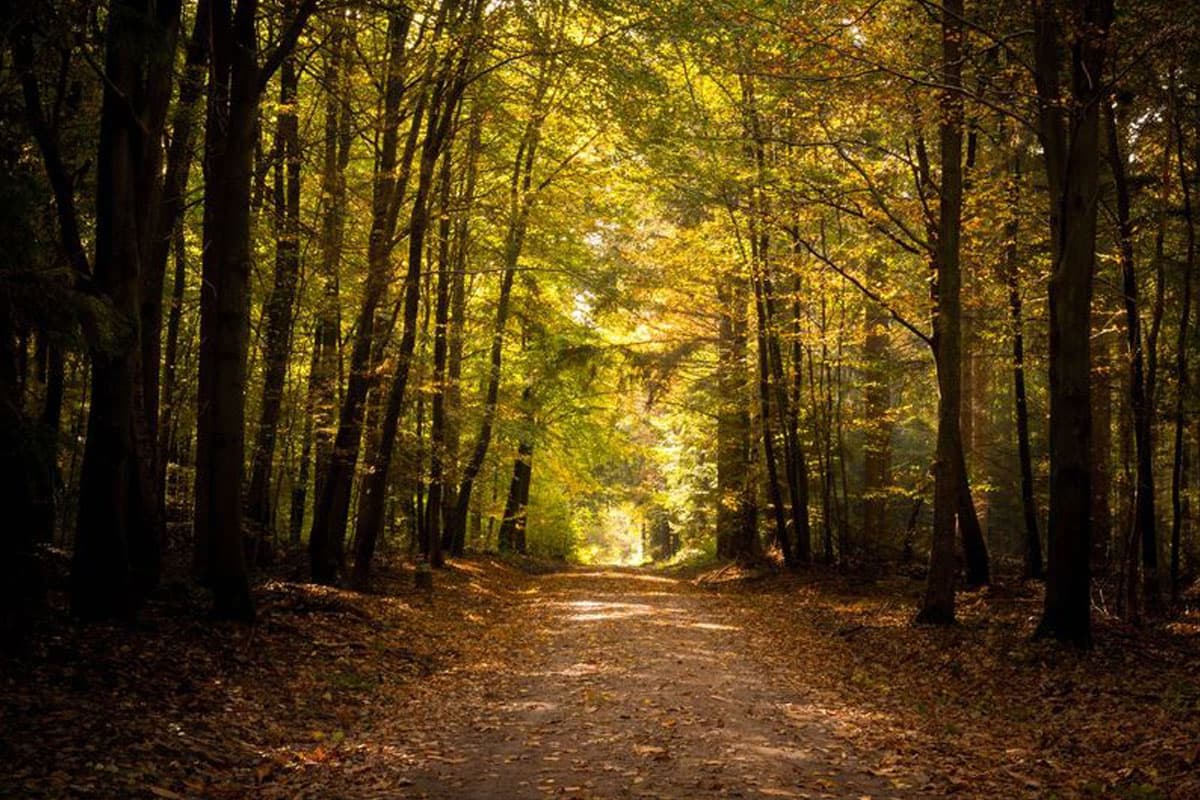
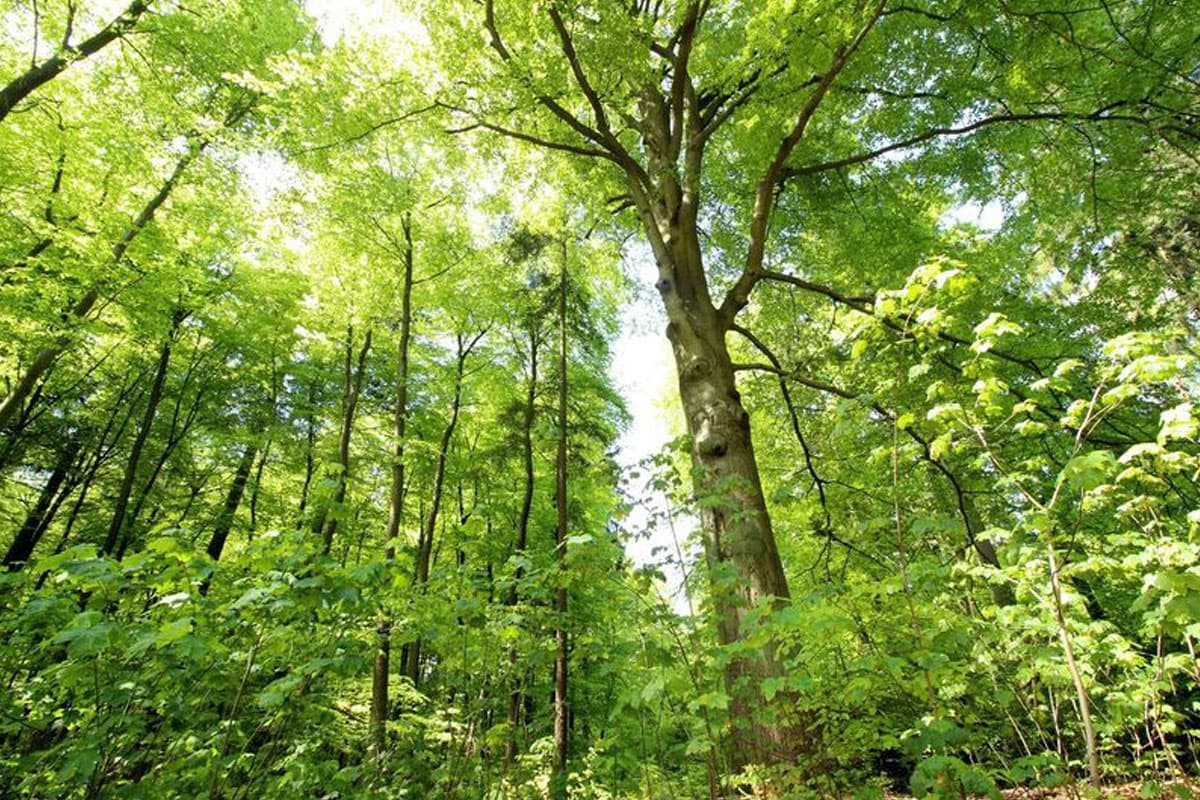
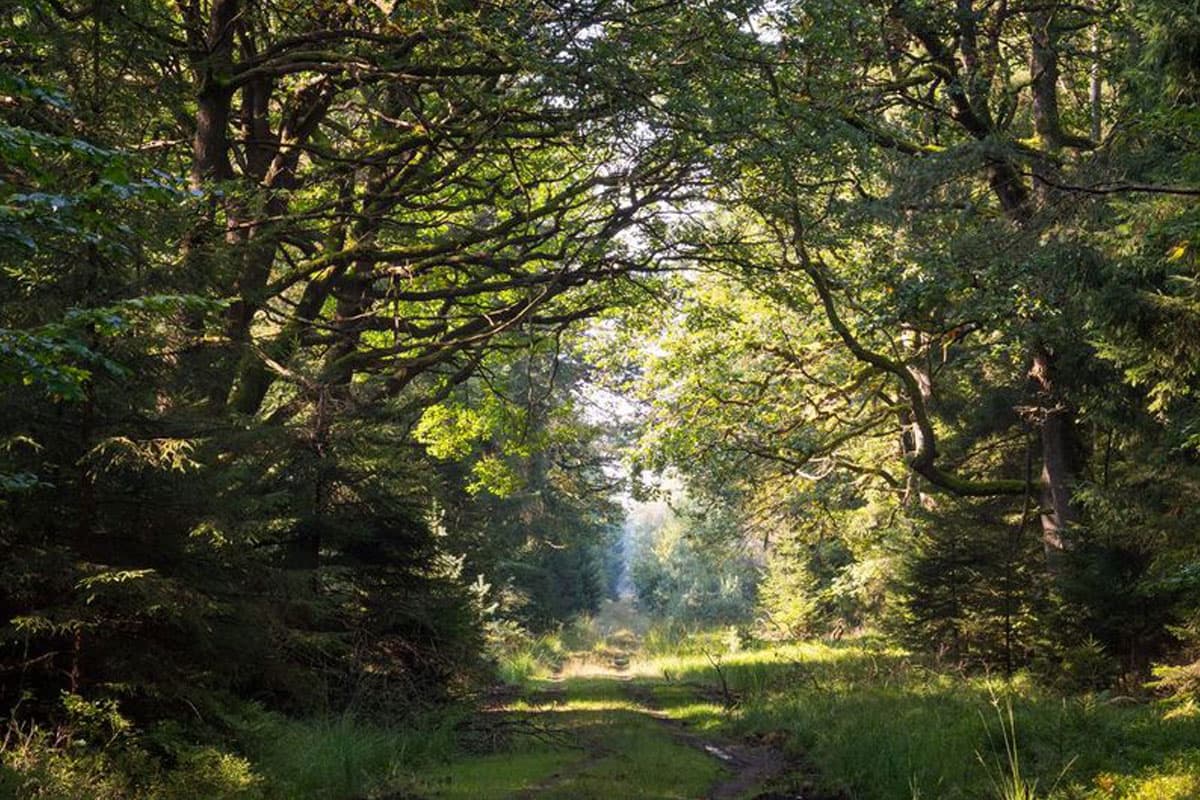
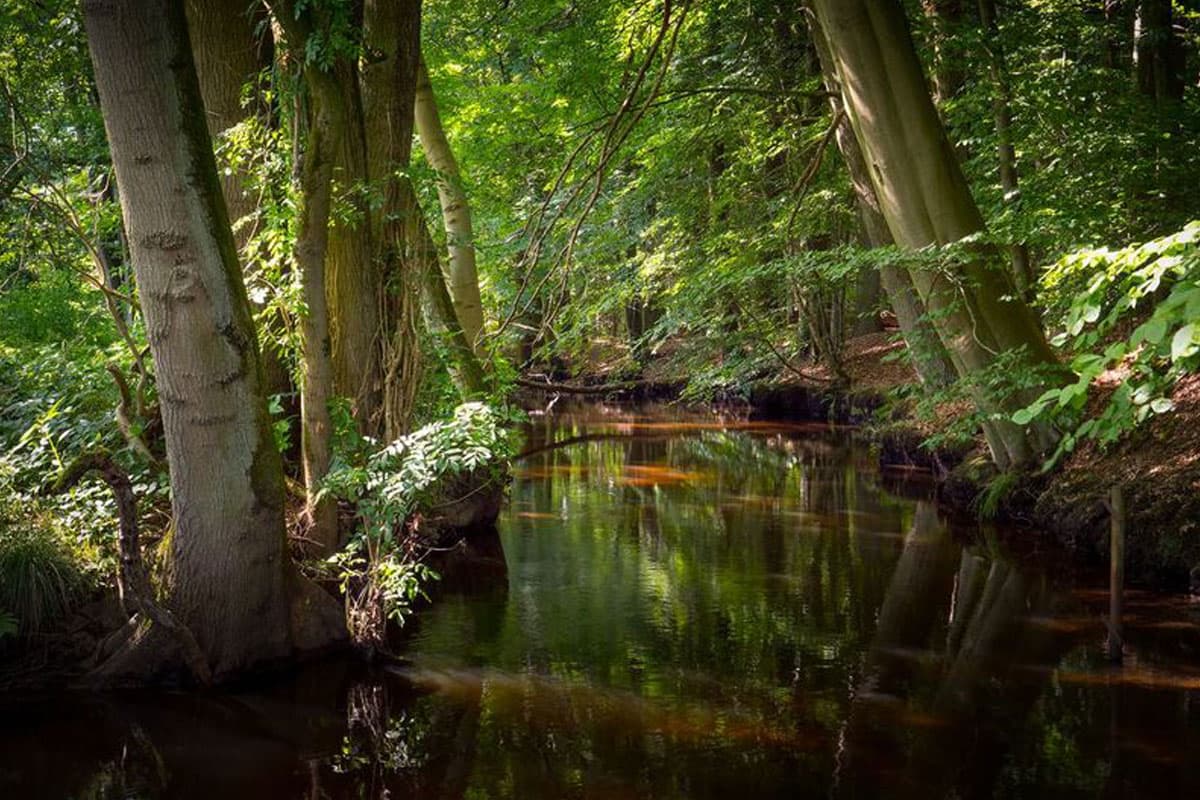
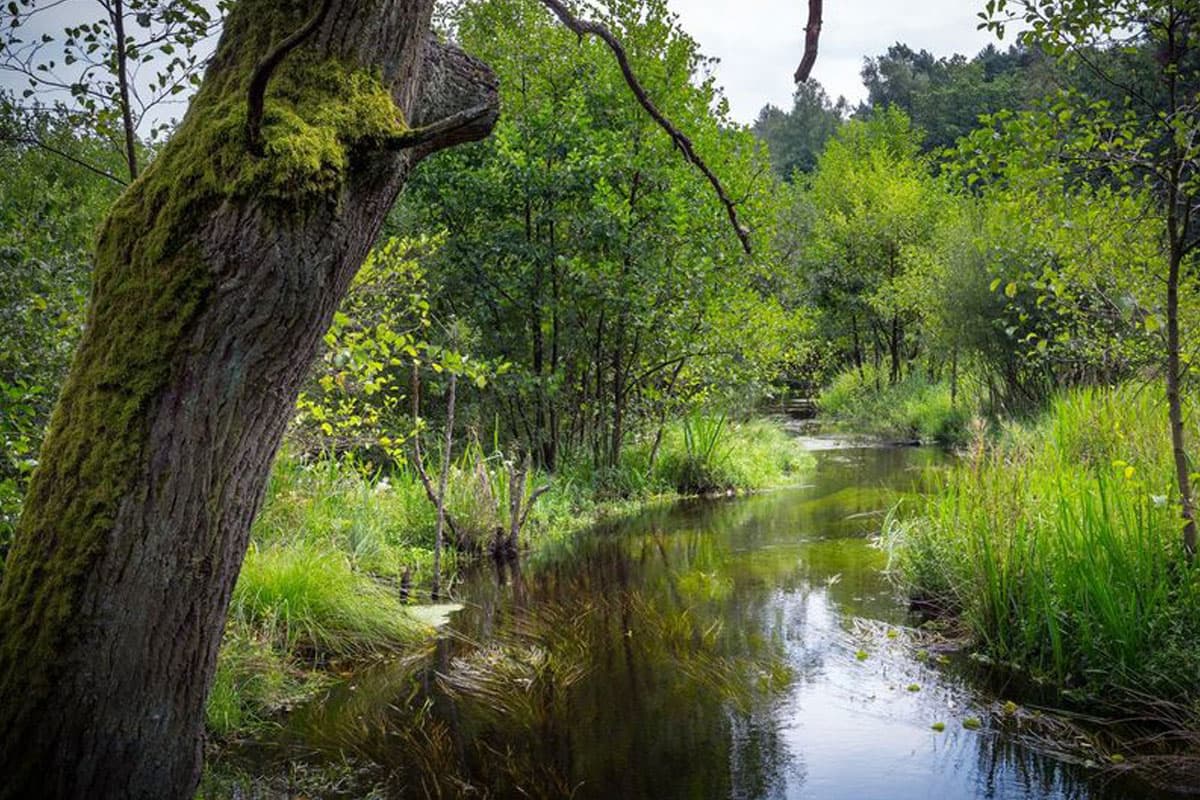
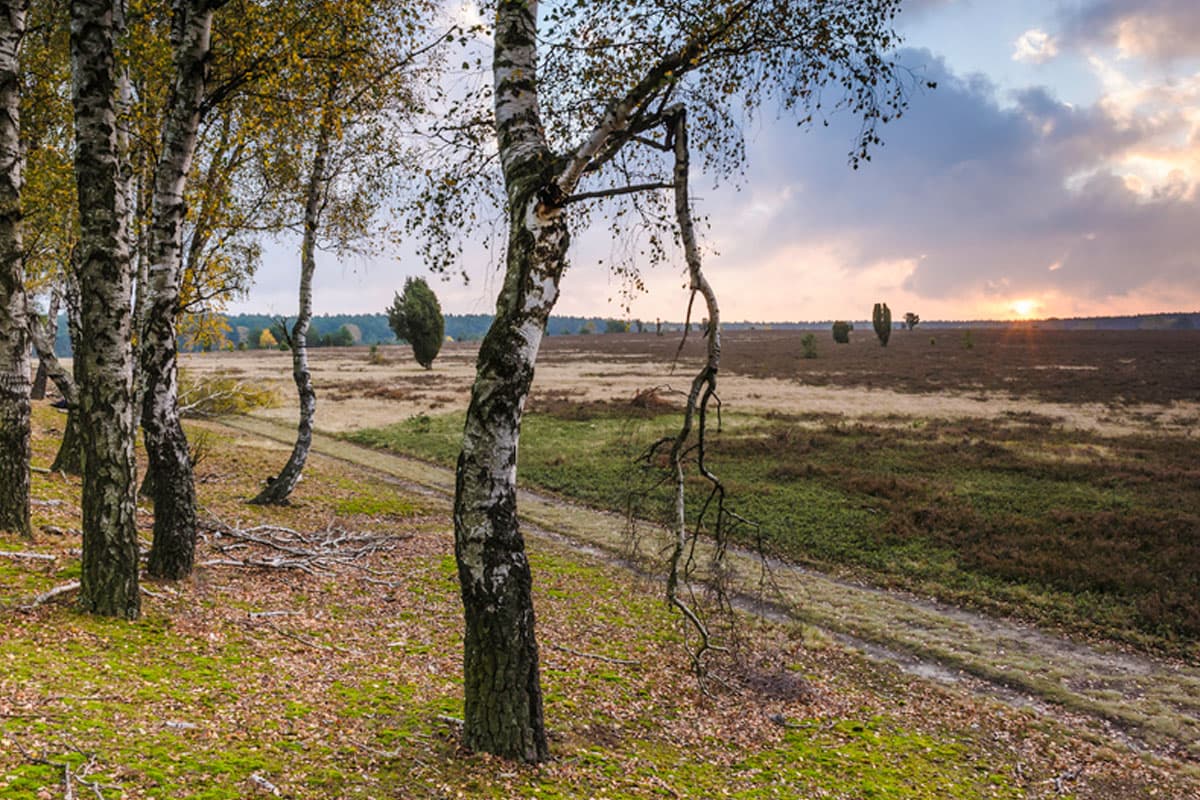
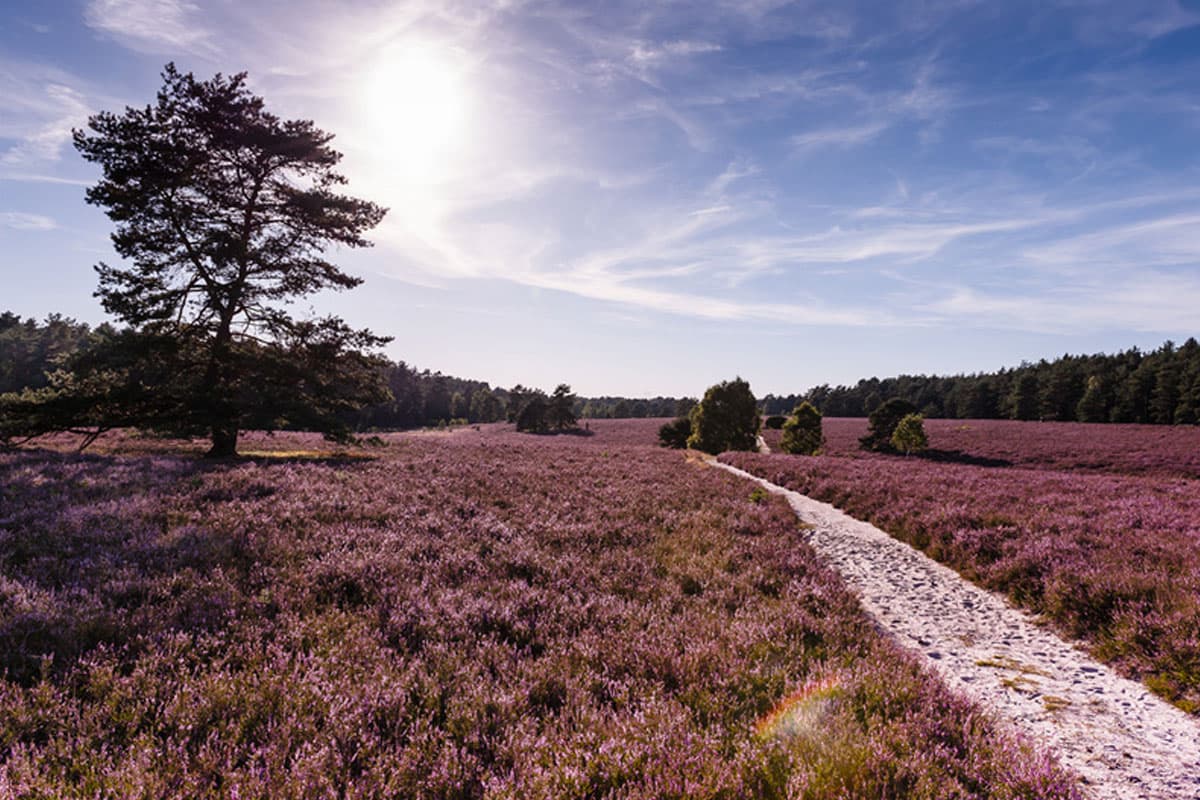
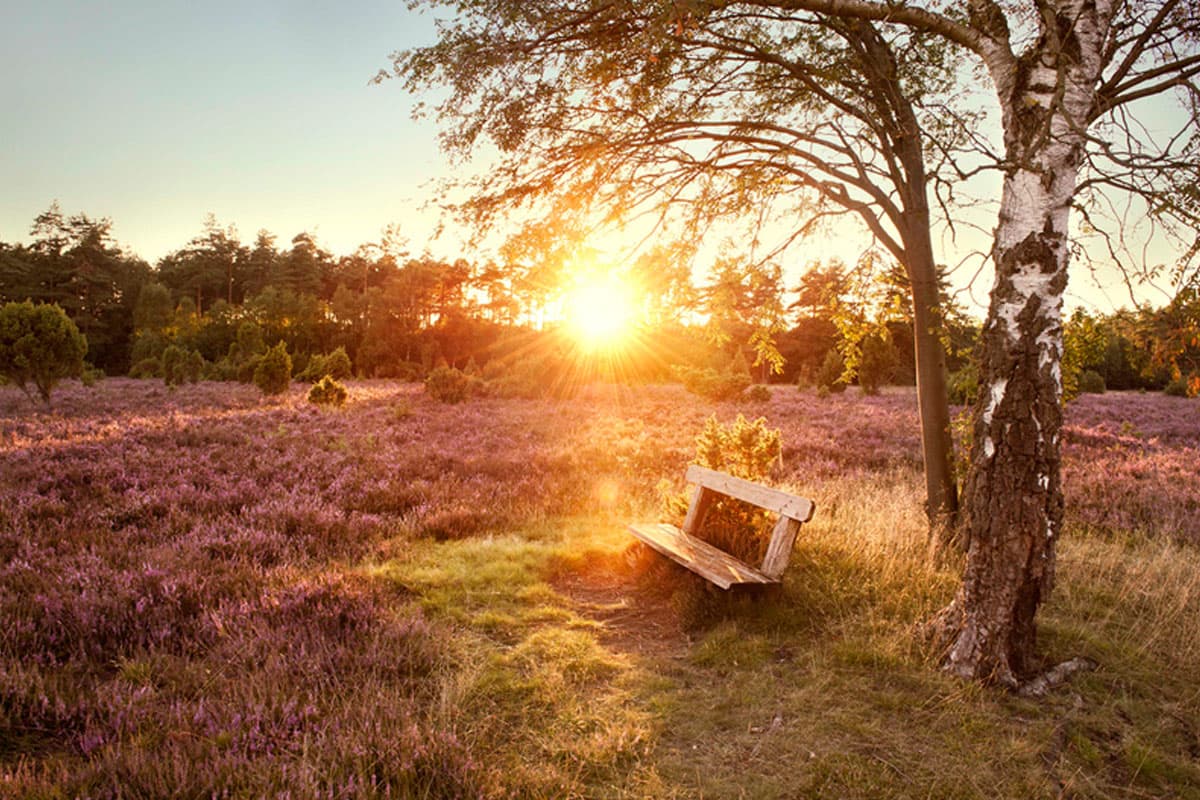
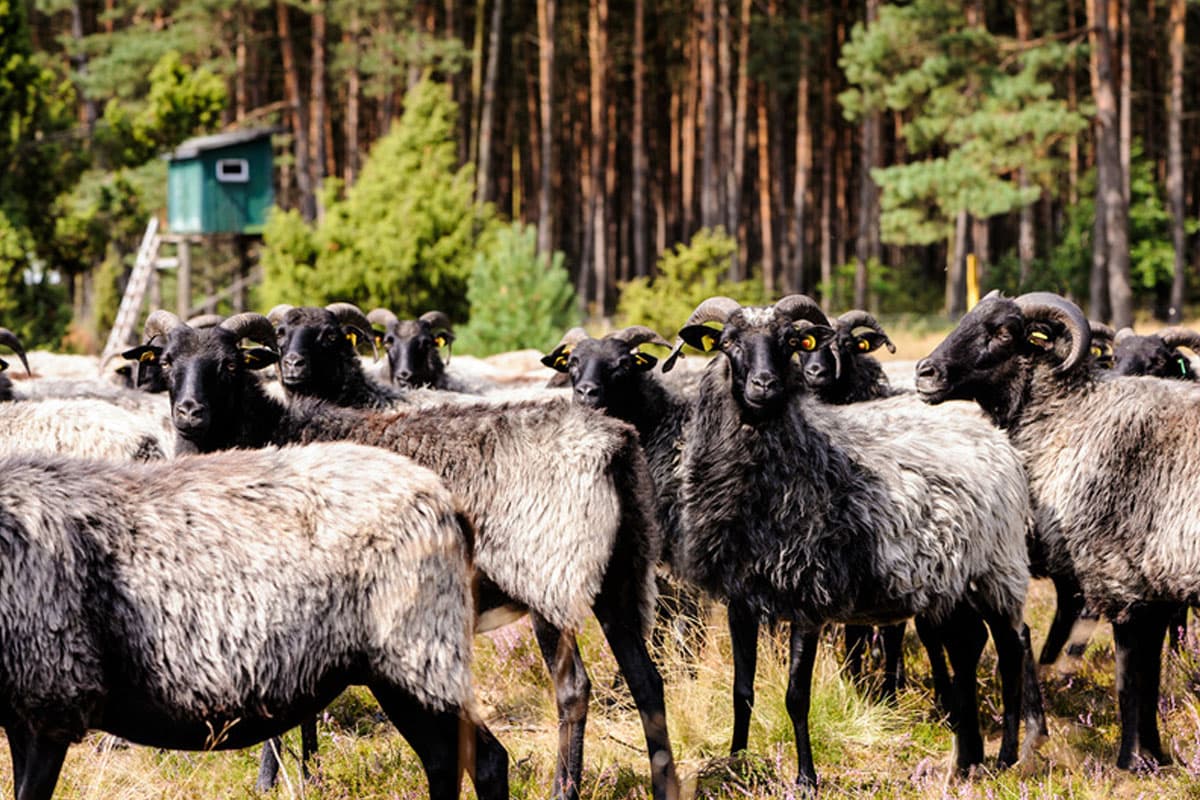
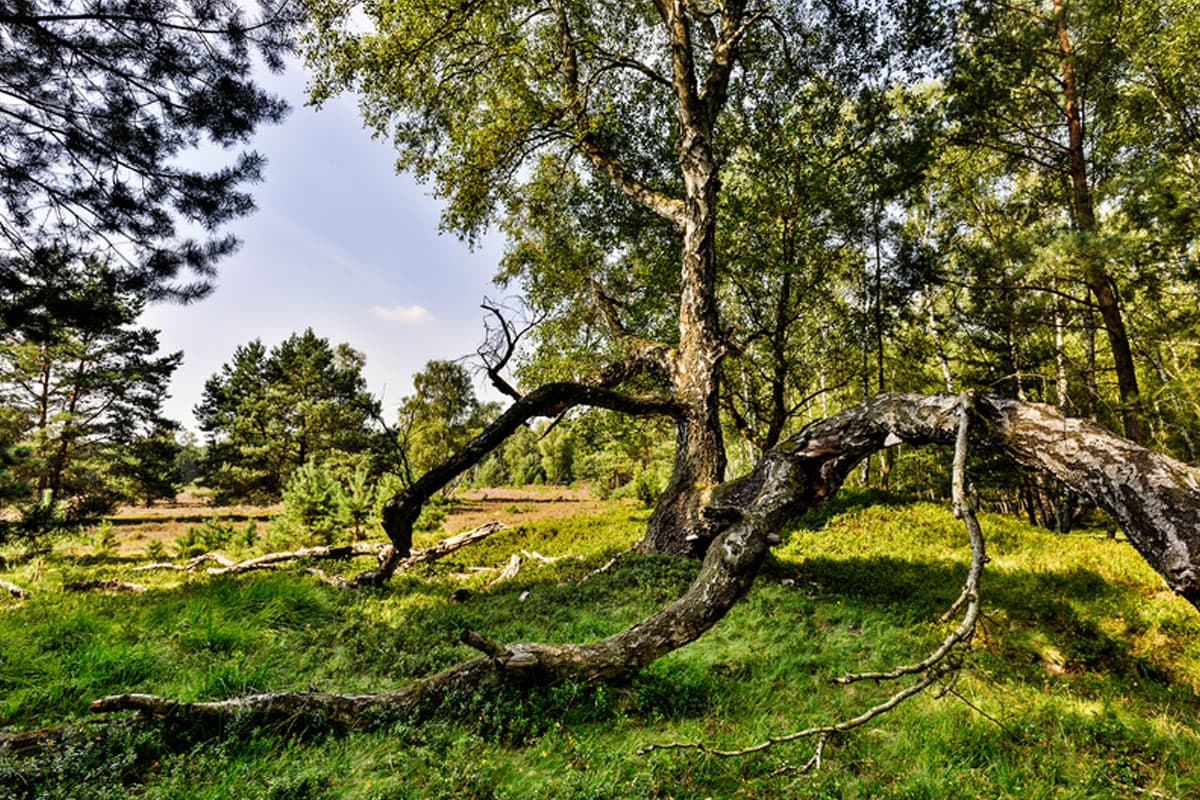
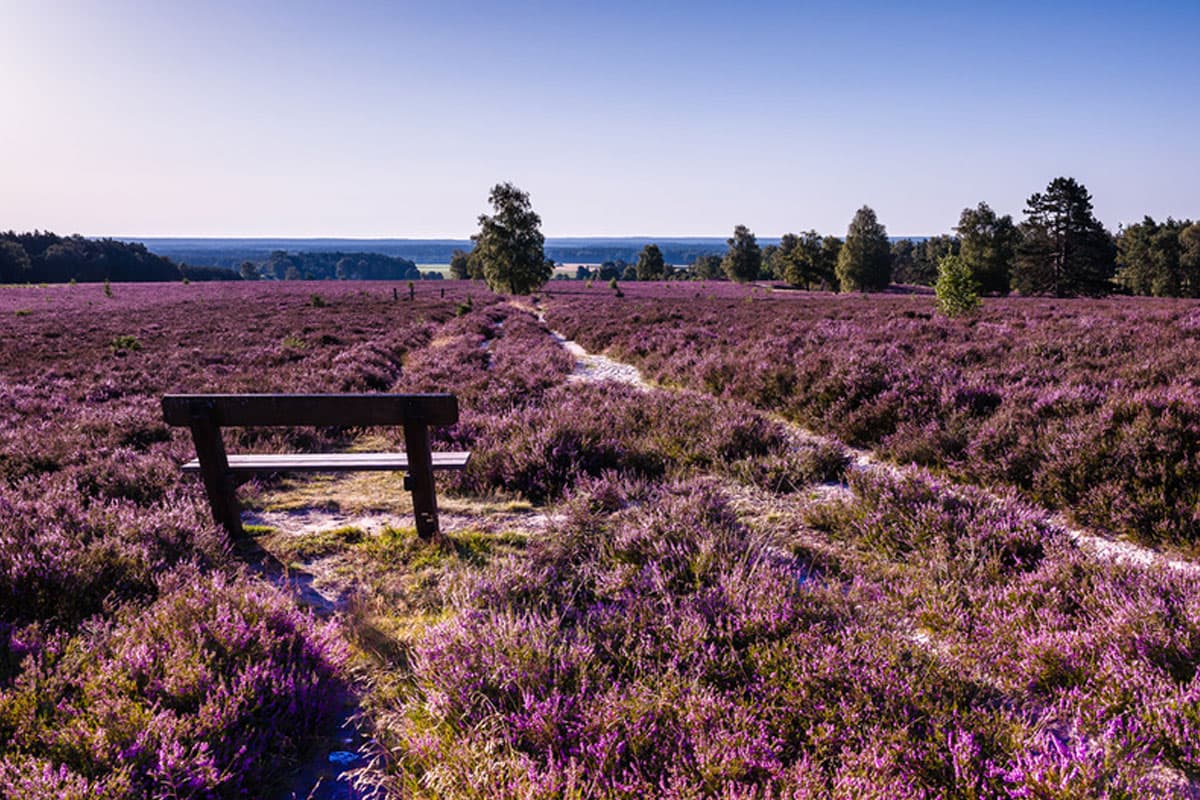
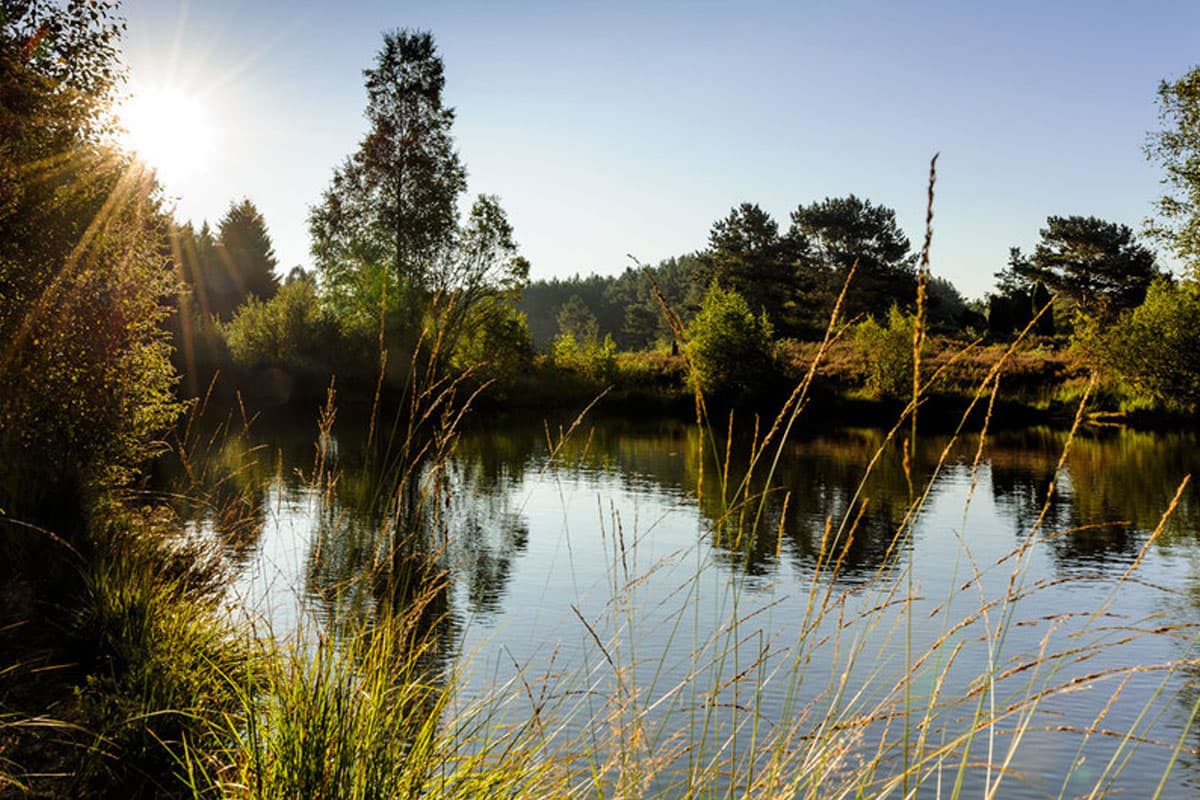
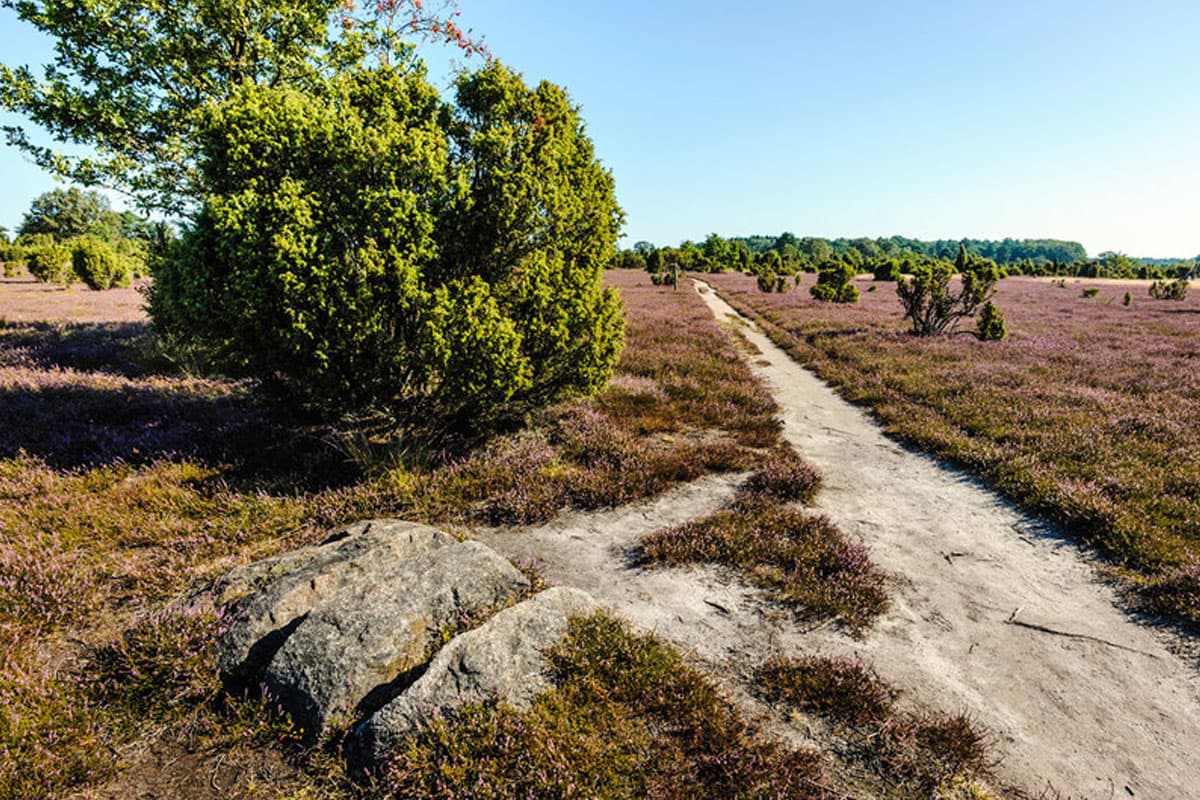
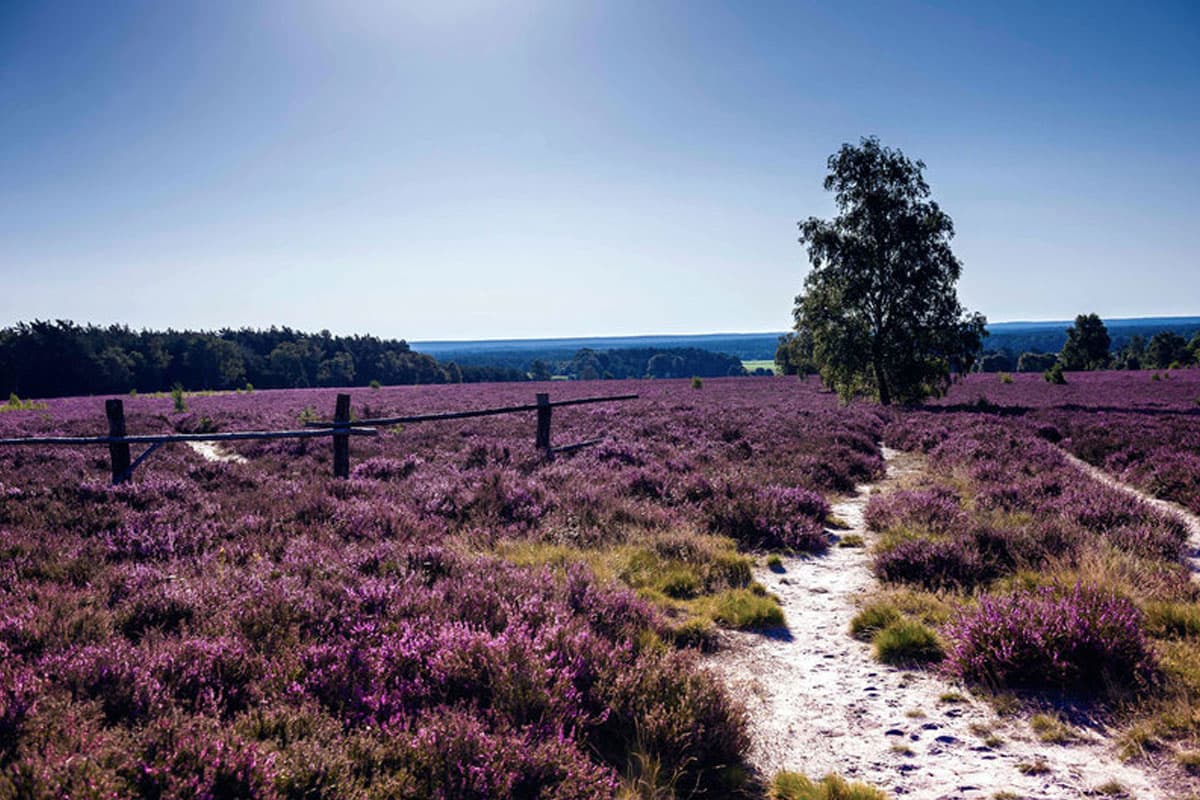
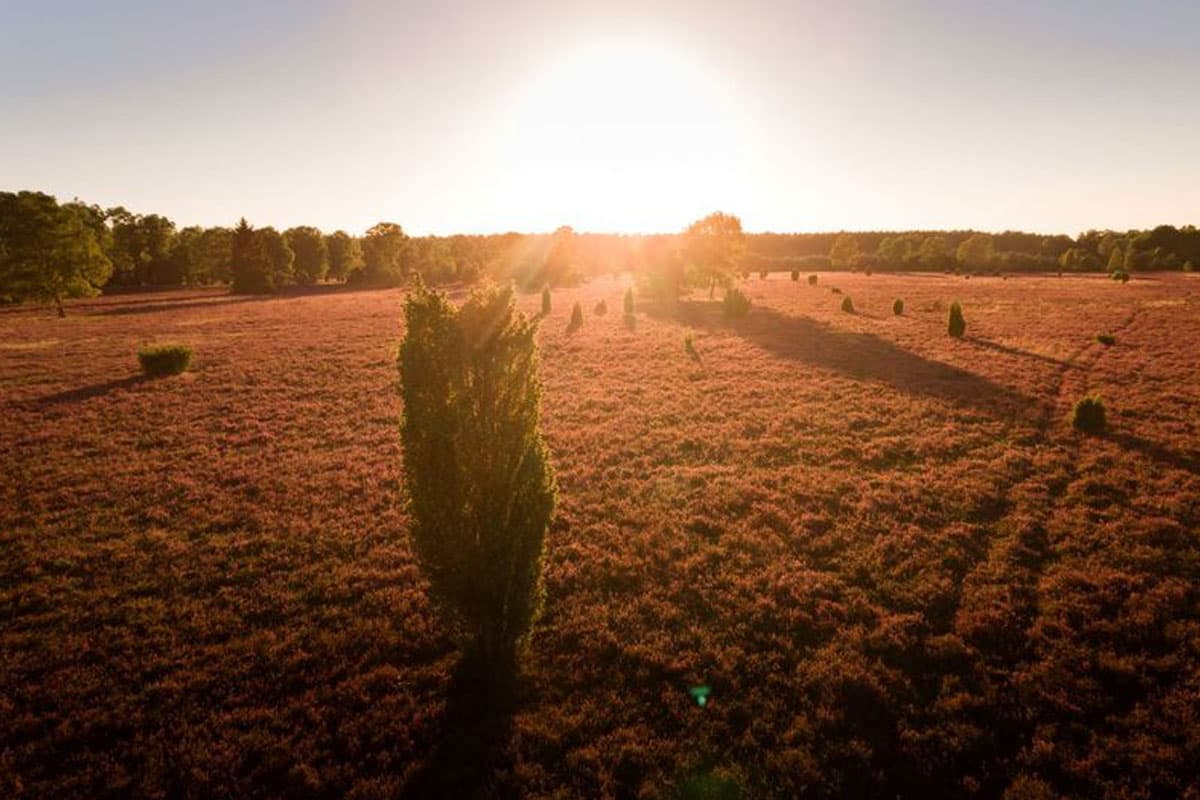
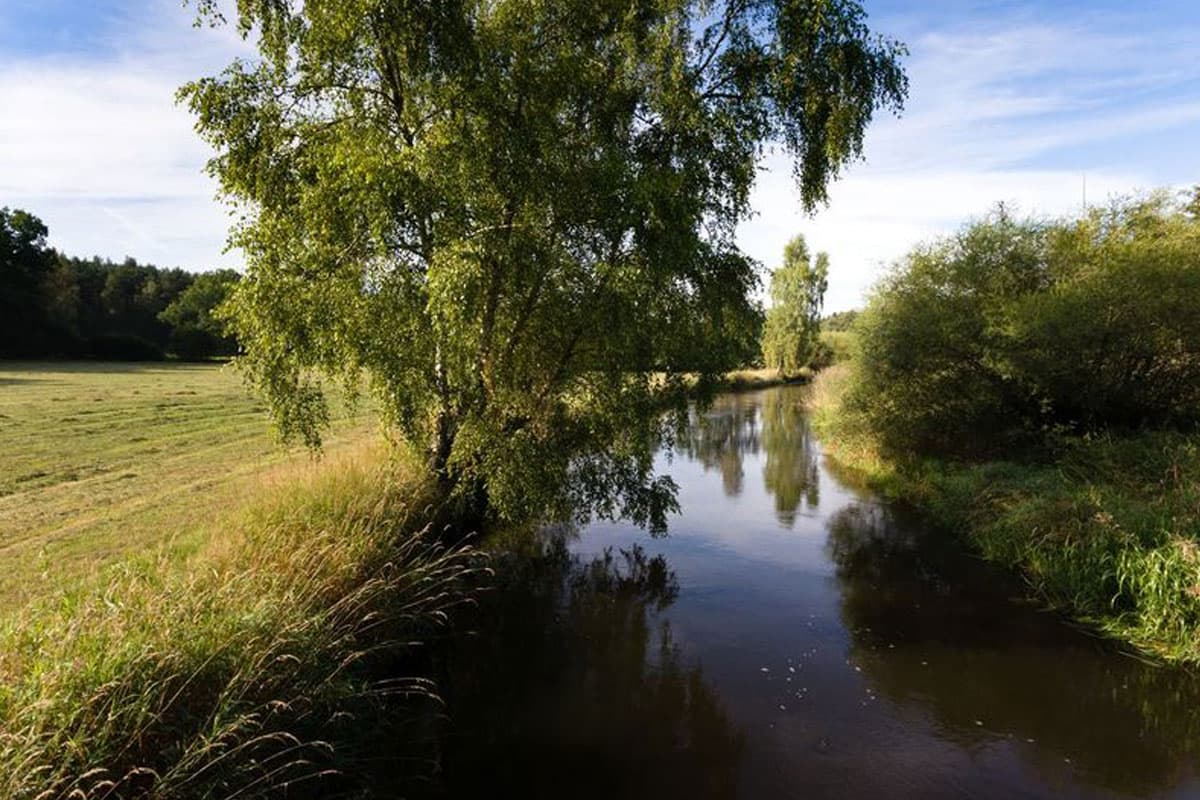
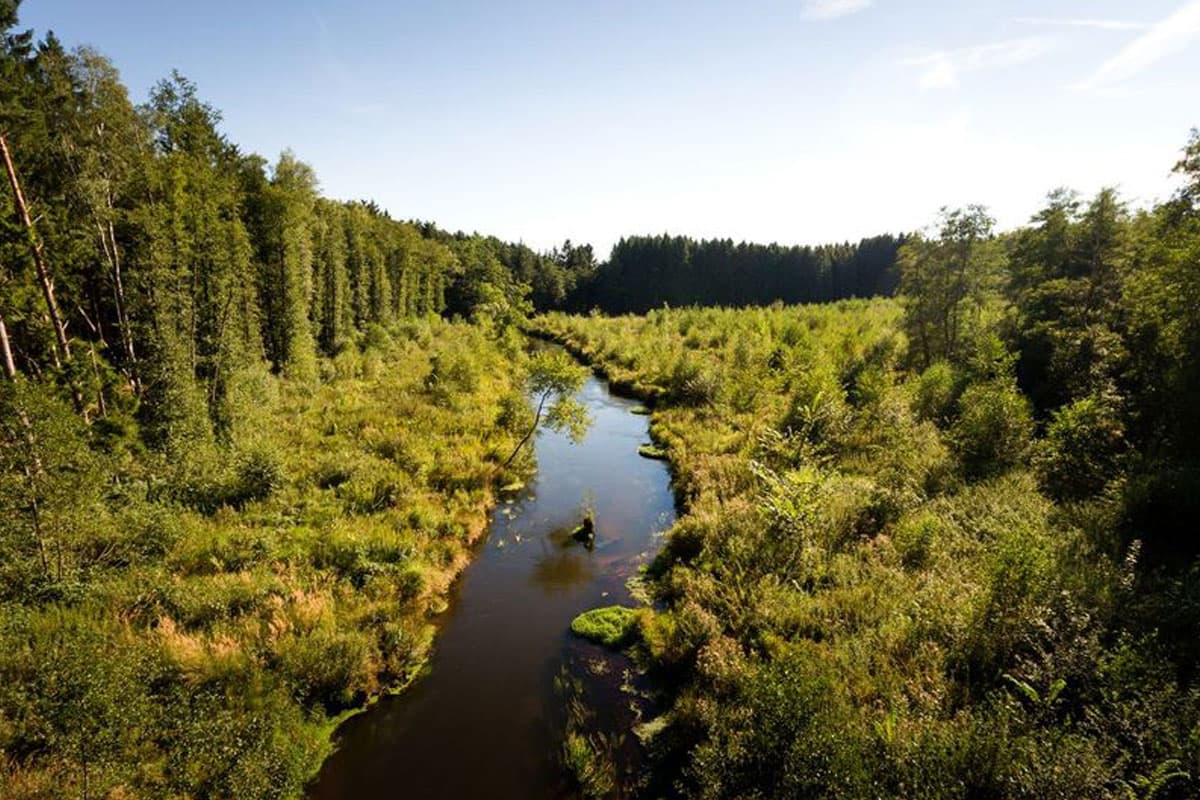
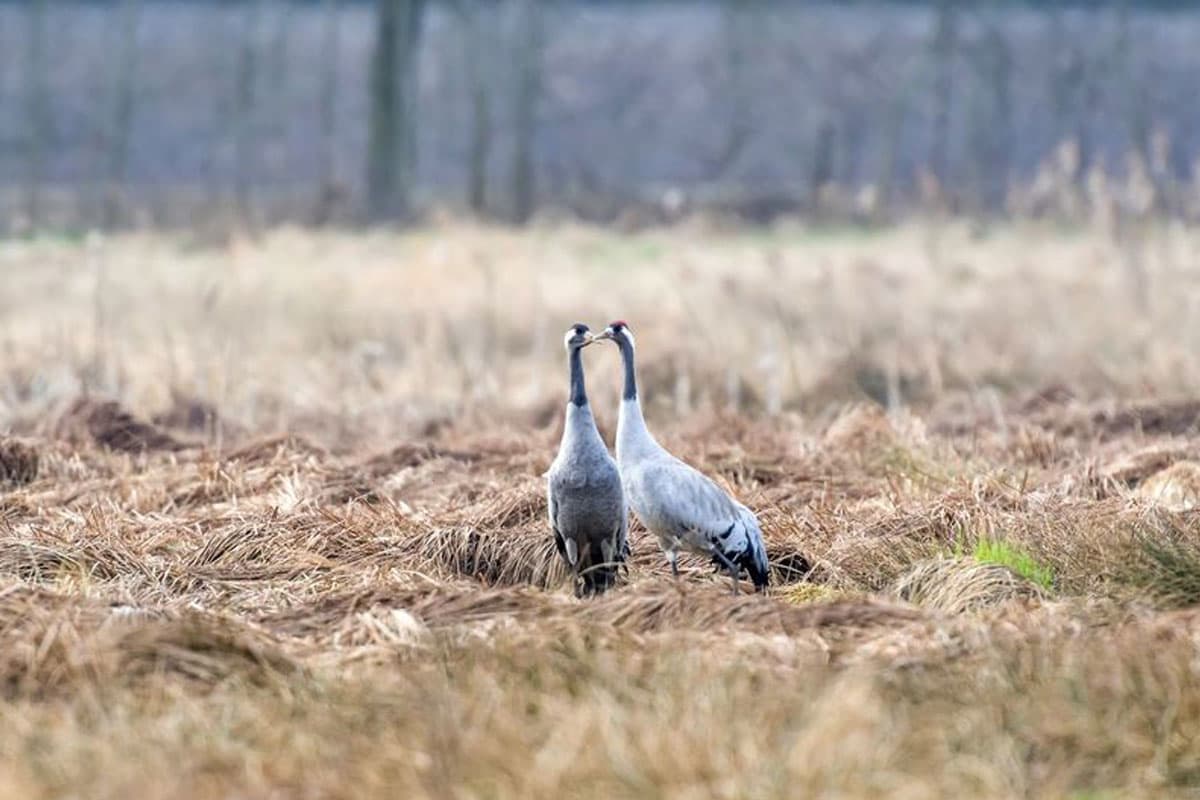
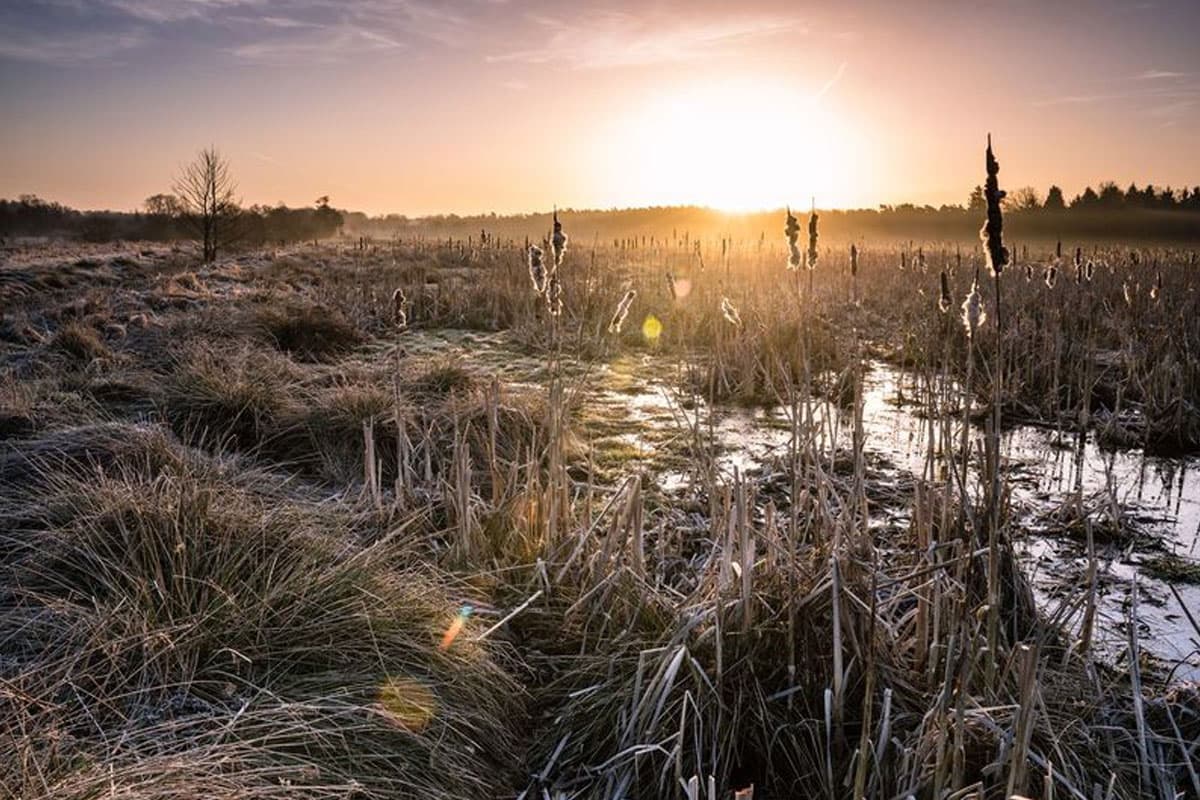
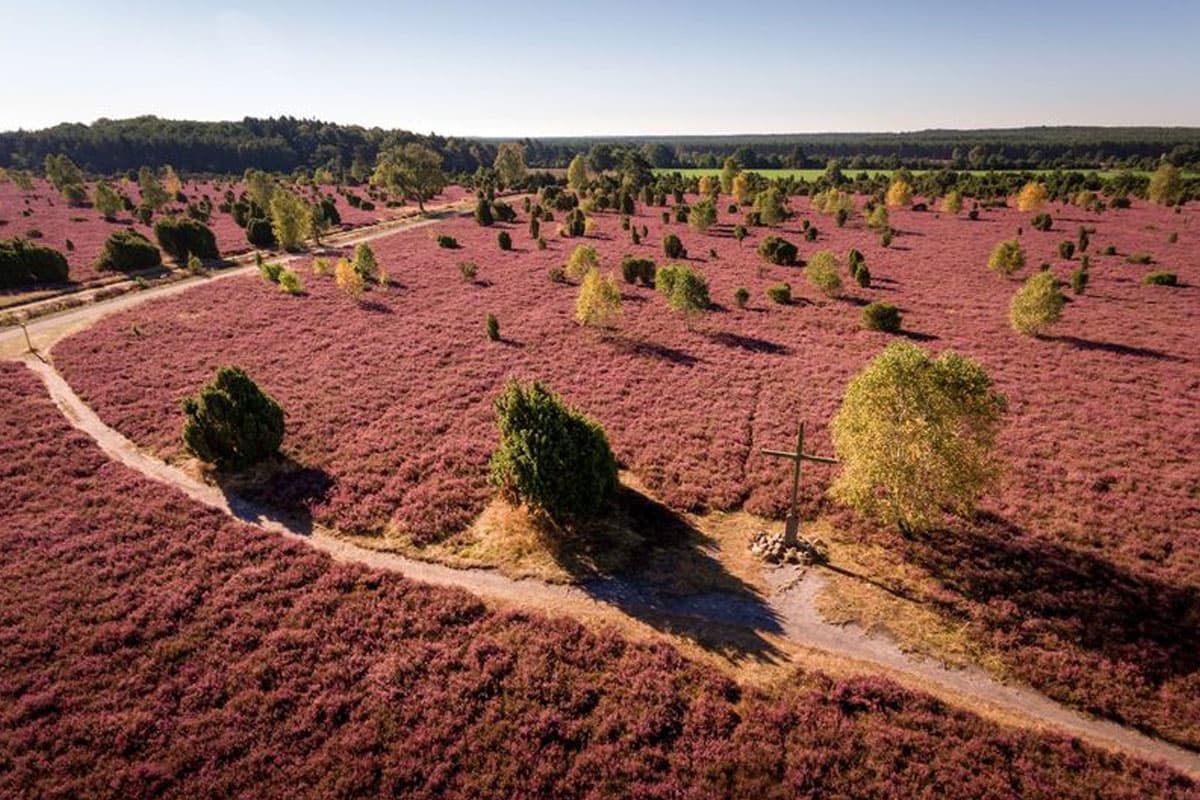
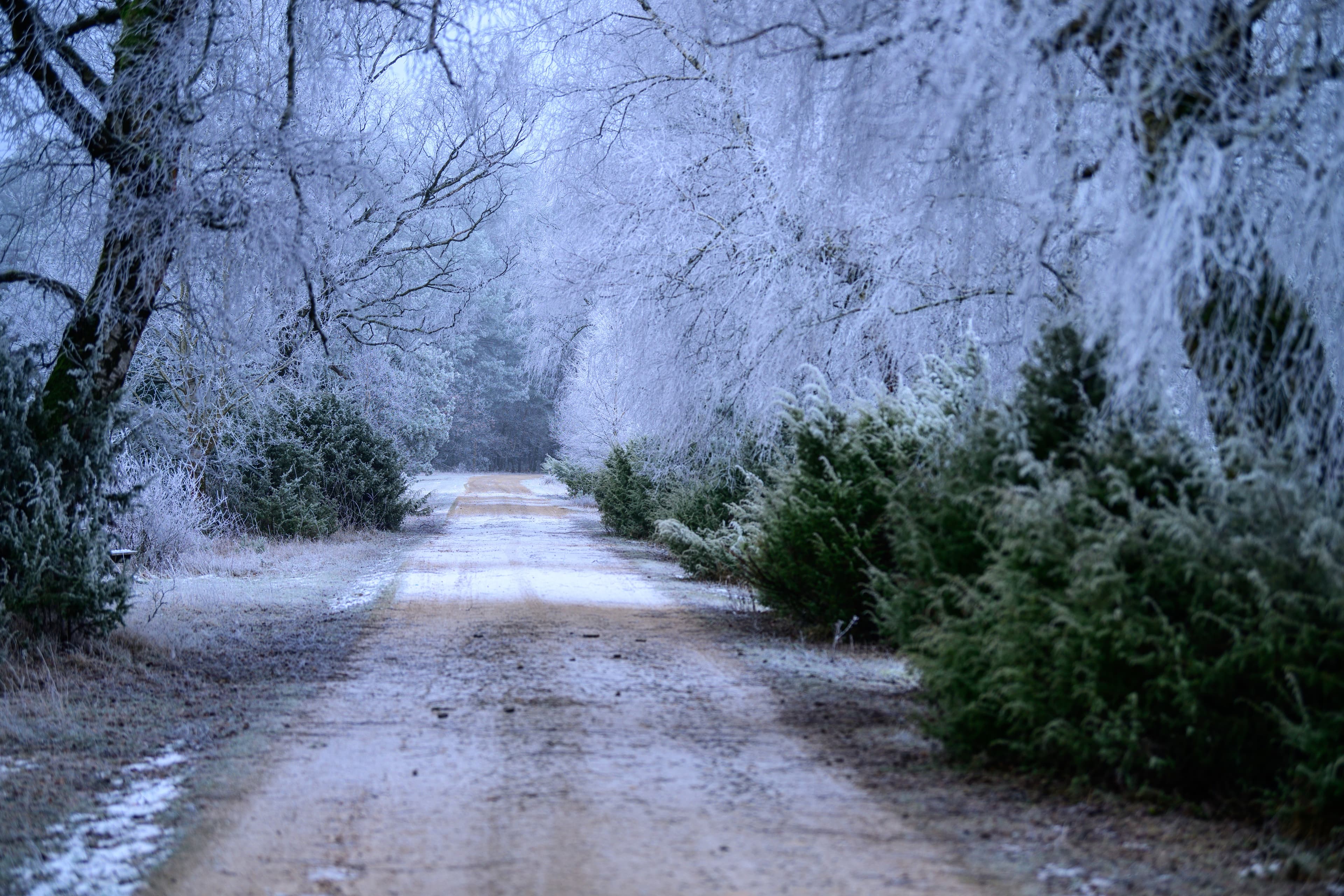
Entstehung der Urstromtäler durch die Eiszeit
Die Böden, Geologie und das Relief im Naturpark Südheide sind eiszeitlichen Ursprungs. Während der vorletzten Eiszeit (Saale-Eiszeit), die ca. vor 130.000 Jahren zu Ende ging, wurde das Gebiet des heutigen Naturparks von riesigen Eismassen, den Gletschern, bedeckt. Während der zwischeneiszeitlichen Warmperioden schmolzen die Gletscher und zogen sich zurück. Dabei hinterließen sie Sand-, Schutt- und Geröllmassen als Grund-, Rand- und Endmoränen. Mit dem Rückzug der Gletscher bildeten sich zahlreiche Schmelzwasserströme, die sich zu Urstromtälern vereinten. Es entstanden z. B. das Urstromtal der Aller und der Örtze mit den charakteristischen Rand- und Beckenmooren. Während einer dieser Warmzeiten bildeten sich aus den abgelagerten Schalen abgestorbener Kieselalgen die Kieselgurlagerstätten bei Oberohe.
Wie entstand die heute abwechslungsreiche Kulturlandschaft der Südheide?
Die durch die Eiszeit entstandenen armen Sandböden im Naturpark Südheide waren bis zum Mittelalter von lichten Eichen-Mischwäldern bedeckt. Dann wurden sie durch menschliche Einflüsse (Holzeinschlag, Waldweide, Laubstreunutzung) fast völlig entwaldet. Auf den nährstoffarmen Sandböden entstanden riesige Heideflächen. Durch Schnuckenverbiss und Plaggenhieb wurde die Heide ständig verjüngt. Erst Ende des 18./ Anfang des 19. Jahrhunderts wurden große Teile der Heide aufgeforstet. Diese Aufforstungen haben dazu geführt, dass der Naturpark Südheide heute zu 65% aus Waldlandschaft besteht.
Aber nicht nur die Aufforstungen haben zum Rückgang der Heideflächen geführt, sondern auch die Erfindung des mineralischen Düngers. Denn dadurch konnte die Bodenqualität verbessert werden und ein weiterer Teil der einstmals riesigen Heideflächen wurde in landwirtschaftlich genutzte Flächen umgewandelt. Das Ergebnis dieser Entwicklungen führte zu der abwechslungsreichen Landschaft des Naturparks Südheide mit Mooren, Heiden, Wäldern und Heidebächen, die den besonderen Reiz des Naturparks ausmacht.
Wo Perlen wachsen und der Adler sein Revier hat
Die Kargheit der Landschaft ist auch der Grund, warum sie bis heute nur dünn besiedelt ist. Nur wenige Straßen und Schienen durchziehen den Naturpark, deshalb finden Besucher hier noch ruhige und nahezu unzersiedelte Landschaftsräume. Diese Ruhe und Abgeschiedenheit begünstigt das Vorkommen seltener Tierarten wie Kraniche, Fischotter, Seeadler und Schwarzstörche, die besonders empfindlich auf Störungen reagieren. Gleichzeitig bietet der Naturpark Erholungssuchenden eine ideale Kulisse für stundenlange entspannte Wanderungen und Fahrradtouren, fernab vom Massentourismus. Auf einigen Wegen ist man hier stundenlang unterwegs, ohne eine Menschenseele zu treffen.
Von den Perlen der Südsee hat man schon häufiger gehört, weniger bekannt sind die Perlen aus der Südheide. In etwa jeder tausendsten Flußperlmuschel findet sich eine Perle. Früher kamen die Muscheln massenhaft in den Heidebächen vor. Heute sind sie vom Aussterben bedroht.
Die naturnahen und nährstoffarmen Heidebäche Örtze und Lachte bieten mit ihren Nebenbächen einen Lebensraum für viele gefährdete und sehr empfindliche Pflanzen- und Tierarten. Deshalb kann man z. B. auf der Örtze nur zu bestimmten Zeiten Kanu fahren. Kleinere Heidebäche dürfen nicht mehr befahren werden. Davon profitieren Fischotter, Bachforellen, Flussperlmuscheln und viele andere. Zum Teil sind die Bäche von so großer Bedeutung für seltene und vom Aussterben bedrohte Arten, dass sie unter Naturschutz stehen – etwa der Weesener Bach, der bei Hermannsburg in die Örtze mündet.
Die hiesigen Heide-Flüsse sind mit ihren Niederungen sogar Schutzgebiete von bundes- und europaweiter Bedeutung. Hierzu gehören:
Die Lutter ist von ihnen der wertvollste Bach für den Naturschutz. Über 160 gefährdete Pflanzen- und Tierarten sind in ihr und ihren Quellgebieten beheimatet. Hier finden sich u. a. die letzten intakten Flussperlmuschelnbestände Mitteleuropas.
Der Fluss-Wald-Erlebnispfad entlang der Örtze ist besonders beliebt bei Jung und Alt. Auf einer Gesamtlänge von ca. 20 km schlängelt er sich entlang der Örtze oberhalb von Poitzen (Gemeinde Faßberg) bis nach Baven (Gemeinde Hermannsburg). Auf unterschiedlich langen Rundkursen erfährt der Besucher an verschiedenen Mitmachstationen einiges zum Thema „Fluss“ und „Wald“.
Stimmungsvolle Heidelandschaft
Die abwechslungsreichen Heideflächen des Naturparks Südheide locken jährlich zahlreiche Naturliebhaber in die südliche Lüneburge Heide:
- die Heide Wietzer Berg
- die Misselhorner Heide und das Tiefental
- die Heidefläche am Angelbecksteich
- die Heide am Schillohsberg
- die Heidefläche am Wacholderwald Schmarbeck
- die Heide am Haußelberg
- die Oberoher Heide
Besonders im August, wenn die Heide in voller Pracht blüht und flächendeckend in Lila erstrahlt, ist sie eine besondere Besucherattraktion. Aber auch zu jeder anderen Jahreszeit vermitteln die Sand- und Trockenheiden stimmungsvolle Landschaftserlebnisse, wie der im Herbstnebel schon beinahe gespenstisch wirkende „Wacholder Wald“ bei Schmarbeck mit seinen uralten knorrigen Wacholdern. Weitere Heideflächen finden Sie auf dem Haußelberg. Mit seinen ausgedehnten Heideflächen bietet er bei schönem Wetter eine herrliche Aussicht.
Ein sehr beliebtes Ausflugsziel ist der Lönsstein auf dem Wietzer Berg bei Müden/Ö. Inmitten einer parkartigen Heidelandschaft wurde der Stein zur Erinnerung an den Lieblingsplatz des Dichters Hermann Löns errichtet. Die größten zusammenhängenden Heideflächen finden Sie rund um Oberohe am einzigartigen Kieselgur-Rundwanderweg und in der Misselhorner Heide bei Hermannsburg.
Der Landkreis Celle bemüht sich seit Jahrzehnten um den Erhalt und die Entwicklung charakteristischer Beispiele dieser Landschaft. Er hat viele Heideflächen angekauft oder gepachtet. Fast alle diese Flächen sind inzwischen als Naturschutzgebiet oder Teil des europäischen Schutzgebietssystems NATURA 2000 gesichert.
Tierische Landschaftspfleger
Im Naturpark Südheide gibt es drei Heidschnuckenherden, die die Heideflächen pflegen und erhalten. In der Misselhorner Heide, im Wacholderwald und in der Oberoher Heide können Sie mit etwas Glück dem Symboltier der Heide begegnen.
Besonderer Tipp: Besuchen Sie den Schäfer mit seiner Herde einmal während des "Schnuckeneintriebs". Termine hierzu finden Sie im Veranstaltungskalender.
Rad- und Wanderwege im Süden der Lüneburger Heide
Erfahren Sie die reizvollsten Kulissen unserer Region auf über 400 Kilometern gut beschilderten Radwegen. Sanfthügelige Heideflächen, Seen- und Flusslandschaften, weite Wiesen und tiefe Wälder sowie faszinierende Spuren der (Heidjer-) Geschichte warten im Naturpark Südheide und der ganzen Region Celle auf Sie. Übrigens bieten wir Ihnen die besten Radtouren in ganz Niedersachsen: der Kreis Celle hat in 2014 mit dem radtouristischen Angebot den Preis für die fahrradfreundlichste Kommune Niedersachsens vom niedersächsichen Wirtschaftsminister überreicht bekommen.
Wer lieber "auf Schuster´s Rappen" unterwegs ist, für den gibt es das Wanderaparadies Südheide in 23 Wanderthemengebieten mit kurzen Spaziergängen von 2 Kilometern Länge bis hin zu Tageswanderungen von gut 20 Kilometern Länge. Hier erleben Sie unsere atemberaubend schöne Natur- und Kulturlandschaft und ihre idyllischen Heideorte näher kennen. Besonderes Highlight ist der in 2014 von den Lesern des Wandermagazins zu Deutschlands beliebtestem Wanderweg gewählte Heidschnuckenweg , einer der Top Trails of Germany. Der Heidschnuckenweg ist in das Wanderwegenetz des Naturparks Südheide integriert und kann mit den Wanderthementouren zu tollen Rundwanderwegen kombiniert werden. Daher eignet sich die Region Celle auch bestens als Standort für Sternwanderungen auf dem Heidschnuckenweg.
Artenreiche Naturschutzgebiete
Im Naturpark Südheide finden Sie weitläufige Moorlanschaften mit einer großen Artenvielfalt. Entdecken Sie seltene Tier- und Pflanzenarten und beobachten Sie faszinierende Naturschauspiele wie die Wollgrasblüte oder den Tanz der Kraniche. Von den Beobachtungstürmen am Becklinger Moor bei Bergen und am Postmoor bei Bargfeld aus offenbart sich ein besonderer Ausblick über die mystische Weite der Moorlandschaft.
Rund um die Hornbosteler Hutweide finden Sie ein ganz anderes Naturreich. Das Gebiet in Hornbostel bei Wietze ist geprägt von stattlichen Alteichen, Auengrünland und herrlichen Wäldern. Hier leben Rotbunte Rindern, der Rote Milan, Weißstorch und Edellibellen. Die Meißendorfer Teiche mit dem Bannetzer Moor sind ein ganz besonderes Naturschutz- und Vogelschutzgebiet. Hier können Sie im Frühjahr und im Herbst den Vogelzug wunderbar beobachten. Zu jeder Jahreszeit ist diese einzigartige Seen-Landschaft ein gelungenes Ausflugsziel für Spaziergänge in herrlicher Natur. Die Hornbosteler Hutweide sowie die Meißendorfer Teiche liegen außerhalb des Naturparks im Landkreis Celle.
Urwaldartige Waldlandschaften
Neben den Heideflächen zeichnet den Naturpark Südheide vor allem sein Reichtum an weitläufigen Nadel- und Mischwäldern aus. Besonders im Hochsommer ist eine Rad- oder Wandertour im Schatten der dichten Bäume angenehm. Aber auch im Herbst, wenn die Laubwälder in der buntesten Farben strahlen, ist ein Ausflug in einen der Wälder im Naturpark Südheide empfehlenswert. Mit dem Lüßwald gibt es hier sogar einen richtigen "Urwald"!
Die südliche Lüneburger Heide zu jeder Jahreszeit entdecken
Die Südheide hat zu jeder Jahreszeit ihren ganz eigenen Charme. Ein Besuch lohnt sich daher im Frühling genauso wie im Sommer, im Herbst und auch im Winter!
Ein besonderer Tipp: In der Südheide können Sie atemberaubende Sonnenauf- und untergänge erleben. Wir zeigen Ihnen, wo Sie dieses Naturschauspiel ganz besonders gut beobachten können.
Barrierefreie Angebote
Zwei Abschnitte des Heidschnuckenweges sind barrierefreie Wanderwege. Die am idyllischen Angelbecksteich gelegene 1,4 km lange barrierefreie Wandertour bietet optimale Voraussetzungen für Menschen mit Geh- oder Sehbehinderungen. Die abwechslungsreiche Kulisse mit dem ruhig gelegenen See und der angrenzenden, von Wald umgebenen, Heidefläche sorgt für ein ganz besonderes Naturerlebnis. Auch ein Teilabschnitt des beliebten Fluss-Wald-Erlebnispfades ist barrierefrei zu erleben. Dieser liegt in dem urigen Heideort Müden (Örtze) und verläuft um den dortigen Heidesee. Natürlich gibt es in den Heideorten auch barrierefreie Gastronomieangebote sowie Unterkünfte, sprechen Sie einfach die örtlichen Tourist Infos an.
Urige Heideorte in der Region Celle
Die Heideorte der Südheide verzaubern mit ihren traditionellen Fachwerkhäusern, alten Höfen und historischen Ortskernen. Besuchen Sie sehenswerte Ortschaften wie
Erwerben Sie in den kleinen Hofläden der Südheide frische Produkte wie Heide-Kartoffeln oder Heide-Honig direkt aus der Region! Selbstverständlich können Sie in den zahlreichen Restaurants der jeweiligen Heideorte auch frisch zubereitete regionale Spezialitäten wie Heidschnucke oder Wildgerichte aus den heimischen Wäldern direkt genießen. Die Gastgeber der Südheide freuen sich auf Ihren Besuch!
Übernachten im Naturpark
In den oben genannten Orten und vielen weiteren finden Sie gemütliche, naturnahe Unterkünfte. Bei der großen Auswahl an Hotels, Ferienwohnungen, Ferienhäusern sowie Campingplätzen und Stellplätzen mitten in der Natur ist sicherlich die passende Unterkunft für Sie dabei! Ein besodnerer Tipp für Naturliebhaber sind unsere Naturotels mit besonders naturnaher Lage und nachhaltiger Ausrichtung.
Was können Sie in der Südheide kulturell erleben?
In der Region Celle gibt es auch kulturell einiges zu entdecken:

